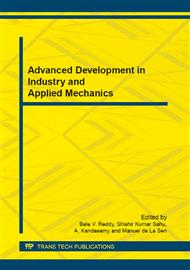p.276
p.283
p.288
p.297
p.304
p.310
p.314
p.318
p.323
Defective Reduction in an In-House Recycle Process of Hard Disk Drive Media
Abstract:
This paper aims to reduce defectives in an in-house recycle process of hard disk drive media. The Six Sigma approach is applied to find out the factors which affect the sunray defect statistically and to obtain the optimal setting of each factor. Currently, defective rate is 23% and a sunray defect on media is identified as a major problem with 9.64% defective rate. It is found that a minimal defective rate of sunray defect is achieved with the setting of the load of rubber pusher at 106.5 gram, the spindle speed during tape move up at 2,500 rpm and the traverse speed of tape at 70 cm/min. Finally, the process with the optimal machine settings is implemented along with applying work instruction and training. It can reduce the defective rate from 9.64% to 3.2%.
Info:
Periodical:
Pages:
304-309
Citation:
Online since:
September 2014
Price:
Сopyright:
© 2014 Trans Tech Publications Ltd. All Rights Reserved
Share:
Citation:


